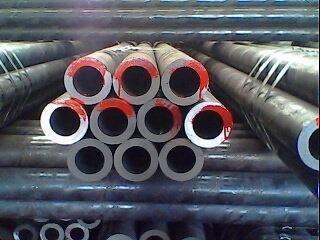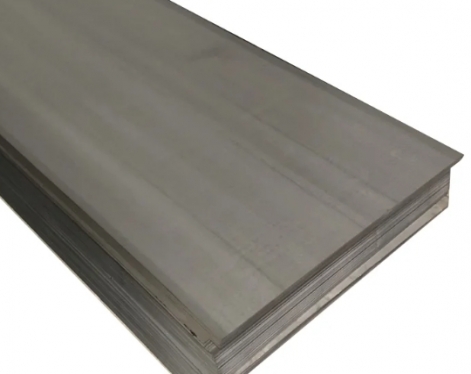High-pressure steel pipes are high-quality carbon steel pipes, alloy structural steel pipes and stainless steel seamless pipes used in the manufacture of high-pressure vessels and pipes. High-pressure steel pipe has good comprehensive mechanical properties at room temperature and high temperature, and strict quality control, which is suitable for various working occasions under high-pressure conditions. High-pressure steel pipes are mainly used in boilers, diesel engine high-pressure oil pipes, fertilizer equipment and pipelines and other fields.
High pressure steel pipe classification
The manufacturing method is divided into hot rolling (extrusion, expansion) and cold drawing (rolling). Among them, the outer diameter range of hot-rolled (extruded, expanded) steel pipes is 22-530mm, and the wall thickness range is 2.0-70mm; the outer diameter range of cold-drawn (rolled) steel pipes is 10-108mm, and the wall thickness range is 2.0-13mm.

Installation of high pressure steel pipe
The requirements for the installation of high-pressure pipelines are similar to those of medium and low-pressure pipelines, but the requirements are higher and the regulations are stricter. Therefore, in addition to meeting the requirements for the installation of medium and low-pressure pipelines, the following requirements should also be implemented.
The high-pressure pipe sections, pipe fittings, fasteners and valves used for installation must pass the inspection and be accompanied by corresponding technical certification documents. After being transported to the site, they should be properly kept, clearly marked, and placed neatly. Before installation, the inner and outer surfaces should be wiped clean, and at the same time, check whether there are foreign objects in the inner channel and whether it is smooth. Check whether the roughness of the nozzle sealing surface and gasket meets the requirements, and there must be no scratches (especially radial scratches), spots and other defects that affect the sealing performance on the sealing surface. Except for the pipes that are required to be degreased, apply oil or butter or white vaseline on the sealing surface of the pipe orifice and the gasket for protection. The threaded part of the pipe end of the high-pressure pipe that has passed the inspection, except for the pipe that is required to be degreased, should be coated with molybdenum disulfide grease or graphite oil blending agent for protection.
When the pipeline is installed, it should be fixed with a formal pipe frame. On the pipe frame that is in contact with the high-pressure pipes and fittings, a protective sleeve should be installed according to the design requirements. When installing the high pressure flange, the chamfer of the pipe end thread should be exposed. When installing the gasket, do not hang it with a wire. You should apply butter to the nozzle and the gasket in advance, and the soft metal high-pressure gasket should be accurately placed in the sealing seat. Flange bolts should be tightened symmetrically and evenly without over-tightening. After the bolts are tightened, the two flanges should be kept parallel and concentric, and the thread exposed outside the nut should be 2~3 threads, at least not less than 2 threads, and the exposed length of each bolt should be basically the same. During the installation process, it is not allowed to use strong pulling, strong pushing, strong twisting or modifying the thickness of the gasket to make up for manufacturing or installation errors. If the pipeline installation work cannot be carried out and completed continuously, the open nozzle should be closed in time. Parts of the instrument sampling part on the pipeline shall be installed at the same time as the pipeline.
High pressure steel pipe classification
The manufacturing method is divided into hot rolling (extrusion, expansion) and cold drawing (rolling). Among them, the outer diameter range of hot-rolled (extruded, expanded) steel pipes is 22-530mm, and the wall thickness range is 2.0-70mm; the outer diameter range of cold-drawn (rolled) steel pipes is 10-108mm, and the wall thickness range is 2.0-13mm.

Installation of high pressure steel pipe
The requirements for the installation of high-pressure pipelines are similar to those of medium and low-pressure pipelines, but the requirements are higher and the regulations are stricter. Therefore, in addition to meeting the requirements for the installation of medium and low-pressure pipelines, the following requirements should also be implemented.
The high-pressure pipe sections, pipe fittings, fasteners and valves used for installation must pass the inspection and be accompanied by corresponding technical certification documents. After being transported to the site, they should be properly kept, clearly marked, and placed neatly. Before installation, the inner and outer surfaces should be wiped clean, and at the same time, check whether there are foreign objects in the inner channel and whether it is smooth. Check whether the roughness of the nozzle sealing surface and gasket meets the requirements, and there must be no scratches (especially radial scratches), spots and other defects that affect the sealing performance on the sealing surface. Except for the pipes that are required to be degreased, apply oil or butter or white vaseline on the sealing surface of the pipe orifice and the gasket for protection. The threaded part of the pipe end of the high-pressure pipe that has passed the inspection, except for the pipe that is required to be degreased, should be coated with molybdenum disulfide grease or graphite oil blending agent for protection.
When the pipeline is installed, it should be fixed with a formal pipe frame. On the pipe frame that is in contact with the high-pressure pipes and fittings, a protective sleeve should be installed according to the design requirements. When installing the high pressure flange, the chamfer of the pipe end thread should be exposed. When installing the gasket, do not hang it with a wire. You should apply butter to the nozzle and the gasket in advance, and the soft metal high-pressure gasket should be accurately placed in the sealing seat. Flange bolts should be tightened symmetrically and evenly without over-tightening. After the bolts are tightened, the two flanges should be kept parallel and concentric, and the thread exposed outside the nut should be 2~3 threads, at least not less than 2 threads, and the exposed length of each bolt should be basically the same. During the installation process, it is not allowed to use strong pulling, strong pushing, strong twisting or modifying the thickness of the gasket to make up for manufacturing or installation errors. If the pipeline installation work cannot be carried out and completed continuously, the open nozzle should be closed in time. Parts of the instrument sampling part on the pipeline shall be installed at the same time as the pipeline.









